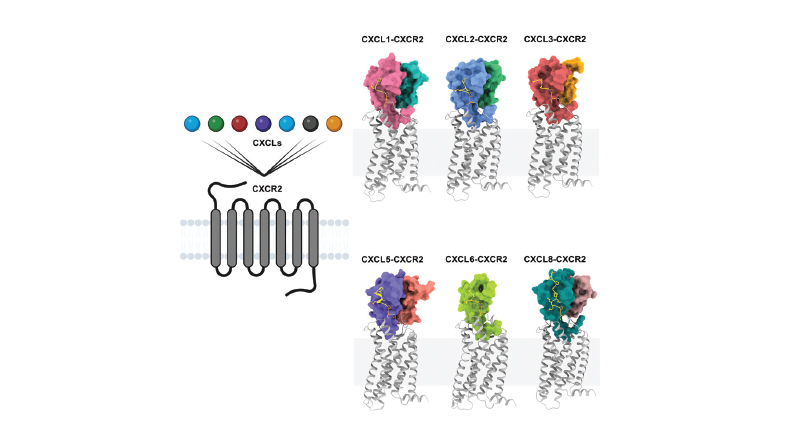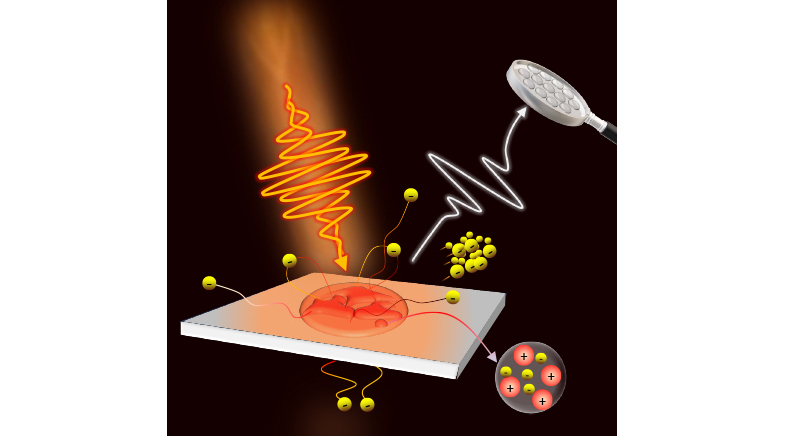In aid of teeth, words and drugs
-
- from Shaastra :: vol 02 issue 03 :: May - Jun 2023

With nanorobots and data banks, ventures are resolving a spectrum of problems — from dental to oral.
Theranautilus
Founders: Ambarish Ghosh, Debayan Dasgupta and Shanmukh Srinivas
Year: 2020
Big idea: Using nanorobots for dental applications to treat hyper-sensitivity and endodontic re-infection
Those with troublesome teeth will agree that there is nothing quite as scary as a dental problem. Sharp sensations while taking in something cold or painful bacterial re-infections are experiences that most patients would pay through their teeth to find a cure for.
What if there was a permanent solution to such problems? That is what Theranautilus, a hardware company specialising in instruments for making nanorobots, is working on.
Incubated at the Indian Institute of Science (IISc), Theranautilus is a spin-off of research conducted in Professor Ambarish Ghosh's laboratory at the institute's Centre for Nano Science and Engineering (CeNSE). According to Debayan Dasgupta, a research associate at CeNSE and one of the founders of the start-up, the original research focused on the use of nanoparticles in cancer cells, where it was found that the nanoparticles moved through the blood and stuck close to the rogue cells.
The focus of the work shifted when Shanmukh Srinivas, a Bengaluru dentist, approached Ghosh to see if nanorobots could be applied to dentistry.

Ghosh worked on developing magnetic nanorobots, and Dasgupta and Srinivas studied dentistry problems of hyper-sensitivity and bacterial re-infection in a root canal treatment (RCT), a procedure tor treating an infected tooth. For hyper-sensitivity, they will use the nanorobots to block some pores in the tooth that are causing the problem. For treating bacterial re-infection after an RCT, the nanorobots will be made to move through a rotating magnetic field to the exact spot where the problem is. The nanorobot will attach itself to where the bacteria are, after which the germs would be killed through externally induced heat, thus boosting the success rate of the treatment.
Ghosh says they were able to tweak the frequency of the magnetic field to ensure that the nanorobots penetrated deep inside the dentinal tubules. By manipulating the magnetic field, they could make the surface of the nanorobots generate the heat needed to kill the bacteria.
The nanorobots will be 1-1.5 microns long and about 200 nanometres wide; indicatively, a single strand of hair is thousands of times bigger. They are helical in shape and made of calcium and an iron-based material, found to be safe in toxicity studies. Animal studies have yielded good results, according to Dasgupta, and they now need to try them out on human beings and publish the studies before they enter the market. The solution for hyper-sensitivity will be the first to get commercialised.
He adds that while they prefer to team up with players in the dental field to make these products, Theranautilus will remain a research-focused venture.
International Center for Nanodevices
Founders: Siddharth Ghosh, Moumita Ghosh, K.V. Chinmaya and G. Mohan Rao
Year: 2021
Big idea: To develop nanodevices that will help study the movement of individual molecules in fluids
A deadly virus attack in an organic honey bee farm in Karnataka's Shivamogga district spawned an idea — and led to the formation of a company. When K.V. Chinmaya, who has a Master's in Physics, found that the Thai Sacbrood Virus was killing entire colonies of honey bees in his farm, he mentioned the problem to Siddharth Ghosh, a German Research Foundation Fellow at the University of Cambridge. Chinmaya was a project assistant at the Indian Institute of Science (IISc) in Bengaluru, and Ghosh was then a junior research fellow there.
Chinmaya had used a cocktail of antibiotics to control the virus, but it did not help. Ghosh asked Chinmaya to stop all antibiotics, and to study the issue in real time. Chinmaya approach IISc for help, and was advised to start a company that would examine the problem. This prompted the two to set up the International Center for Nanodevices (ICeNd) in 2021, with researchers Moumita Ghosh and G. Mohan Rao.

(From left) G. Mohan Rao, K.V. Chinmaya, Moumita Ghosh and Siddharth Ghosh.
PHOTO: N. RAMAKRISHNAN/BY SPECIAL ARRANGEMENT
Based in Bengaluru and Eindhoven in the Netherlands, ICeNd is a semiconductor quantum nanofluid company building nanodevices to detect ultra-small motions in real time. The universal nanodevices can be used in drug discovery, quantum engineering, energy and metrology. With the help of these nanodevices, the researchers will study the flow of molecules in real time in fluids with ultra-high resolution microscopes, which allow individual molecules passing through nanofluidic channels to be viewed.
The immediate area of application will be in the pharmaceuticals industry, Siddharth Ghosh says. "We enable pharmaceutical companies to study how a drug molecule is being discovered or a virus is evolving and its interaction with proteins and lipids."
Another application is in studying trace elements. ICeNd's devices will be able to detect a single molecule of arsenic present in water or milk.

ICeNd reckons that UNanoD will set the standard for interface between nanoscopic measurement devices.
PHOTO: BY SPECIAL ARRANGEMENT
A base in Europe gives the company access to a vibrant scientific community, while helping it get funding. The engineering and production of the nanodevices will be done in India. As all four founders have connections to the IISc, the initial production started at its National Nanofabrication Centre.
The company is doing scale-up and engineering-related research. It will have to raise large sums of money to set up an ISO-certified nanofab cleanroom.
The product, says Siddharth Ghosh, is at TRL8 (Technology Readiness Level 8) and will take a year to reach TRL9, after which production will begin. The aim is to produce about 1,000 devices a month to begin with.
The company's first device, the Universal Nanofluidic Device (UNanoD), will handle biological and materials science problems in fluids in real time at the single-molecule level.
ICeNd seeks to become an independent semiconductor integrated devices manufacturer for quantum nanotech products.
IndiaSpeaks Research Labs
Founders: Madhavaraj and Sasidharan Ayyavu
Year: 2021
Big idea: Developing automatic speech recognition systems for Indian languages
Customers often complained to a vendor of Android set-top boxes that they found it difficult to remember the numbers of their favourite television channels out of the scores the gadgets offered. The vendor turned to techie brothers Madhavaraj and Sasidharan Ayyavu for help, pointing out that a voice command option would facilitate the users.
The Ayyavu brothers' start-up IndiaSpeaks Research, which deals with automatic speech recognition (ASR), worked on the problem — the venture's pilot project — by building a corpus of words in common use. Their two-year-old start-up now provides speech-to-text, text-to-speech and natural language processing solutions to clients.
It all started with a project that Madhavaraj had taken up while doing his PhD: to build a speech recognition system. The challenge with developing ASR for Indian languages, especially South Indian languages, was the lack of a data bank or corpus of words. There were the added problems of inflection and agglutination, when a verb can be modified to form any number of words, giving rise to an infinite vocabulary. To solve this problem, Madhavaraj explains, one has to understand word formation rules.

Madhavaraj (top) and Sasidharan Ayyavu (above).
PHOTO: N. RAMAKRISHNAN/ BY SPECIAL ARRANGEMENT
After a BTech in Electrical Engineering and an MTech in Signal Processing, he worked on his PhD, and subsequently postdoctoral research, in Electrical Engineering in Signal Processing and Speech Recognition, at the Indian Institute of Science (IISc). With the PhD project for the start-up, Madhavaraj was able to give data in Tamil, Kannada, Hindi and English.
The Ayyavus soon realised that there was a demand for ASR for Indian languages. Why not offer this as a service rather than sell the data and develop ASR for Indian languages, beginning with the South Indian ones?
So, Madhavaraj and Sasidharan, who has a BTech degree in Electrical Engineering, floated IndiaSpeaks Research Labs, incubated at IISc's Society for Innovation and Development (SID). It got funding through SID from the Startup India Seed Fund Scheme, an initiative of the Indian government, and a Honeywell CSR grant — with which it started developing ASR for Telugu and Malayalam.
A VoiceTech company, Madurai-based IndiaSpeaks Research will convert, say, Tamil speech to Tamil text. Because of non-availability of data, it is yet to start work on speech translation. A vast corpus of words is needed to convert speech to text and an even larger bank to translate it into a different language, Madhavaraj says.

For any machine learning system, he adds, a specific dataset is required. For speech recognition, for example, you need Tamil speech and Tamil text. A translation system requires a parallel corpus – words in Tamil and corresponding words in English. The venture hopes to build that over the next few months.
Its other possible uses are in public announcements, news websites and dubbing.
"Our system is built in such a way that easy customisation is possible. It will recognise what you have spoken, will convert from voice to text, from the text it will understand the intent and then extract the names and entities from the text and then go to that program" Madhavaraj says.
Have a
story idea?
Tell us.
Do you have a recent research paper or an idea for a science/technology-themed article that you'd like to tell us about?
GET IN TOUCH














